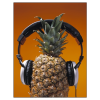Retained
-
Member Title
Newbie
-

"Comparison by Contrast" method for evaluation of the playback chain
PaulT replied to PaulT's topic in General Forum
Barry, Thanks for your usual clear and concise response. I've been aware of the "comparison by contrast" method for some time (possibly through one of your earlier references). Its only been about the last year or so where I've put the method to use. Previously I've used what is described as the "comparison by reference" method. And the reference I am most familiar with is the human voice. So I would concentrate on getting the vocals right and hope everything else would fall into place. With this approach you can never be sure which is the more accurate and which is the colored component. Its possible that one component can be overcompensating for the deficiencies of another. I can see now this is not the way to go. Some of the changes I've made to maximize differences between recordings include server and playback software, and cables. I stated in an earlier post the aspects of the recording I focus on are the spatial cues. The best way to describe the improvement would be to say recordings sound more like there are human beings behind the instruments (that is to say playing the instruments) as opposed to just hearing the instruments in space. -

"Comparison by Contrast" method for evaluation of the playback chain
PaulT replied to PaulT's topic in General Forum
Hi elsdude, I'm not sure I understand your speaker example with an up-tilted upper octave response. I think a speaker with this type of response would impart a type of sameness to most recordings. Some recordings may sound good, but remember we are looking for more differences or contrast between various recordings. I find the aspect of a recording that makes it easy for me to discern differences is the recording (for lack of a better word) soundscape. Every recording is unique, just take in to consideration miking and recording techniques, recording studios sound signatures, concert venues, just to name a few. The beauty of this method is in its simplicity, it sets the bar low, one need not quantify perceived differences, you need only to recognize there are more differences between recordings to satisfy the premise: The more accurate system is the one which reproduces more difference, more contrast between various program sources. Paul -

"Comparison by Contrast" method for evaluation of the playback chain
PaulT replied to PaulT's topic in General Forum
Hi Boris Yes I agree. A savvy person will find value in both camps. One can not exist without the other. -
I've been a fan of this forum, checking in almost daily for over 4 years. I finally found the time (thanks to this brutal Winter) and the courage to post a few thoughts, and as you can probably tell by the thread title, I'm jumping in with both feet! I had originally intended to start a discussion on using the differences between audio recordings to evaluate accuracy in the playback chain. After a few searches on the subject, I found this: Are You On The Road To... Audio Hell? by Leonard Norwitz and Peter Qvortrup Quite a bit of information, and a far more interesting read than anything I can ever hope to come up with. I would like to say thanks to the recording industry professionals, IT guys, software designers, and everyone else, objectivists and subjectivists alike. Because of your ideas and contributions I keep coming back for more. Paul

